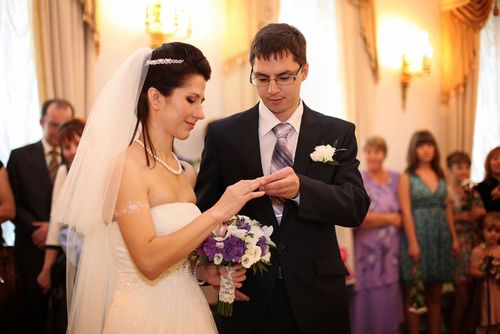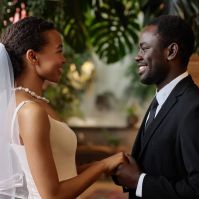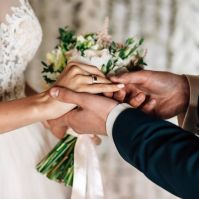 What is a wedding ceremony? There are many different answers to this question. The specific script used depends on many factors, such as the preferences of the couple and the atmosphere they want to create. While the only legally required elements are the declaration of intent and the pronouncement, most ceremonies include these 10 basic steps.
What is a wedding ceremony? There are many different answers to this question. The specific script used depends on many factors, such as the preferences of the couple and the atmosphere they want to create. While the only legally required elements are the declaration of intent and the pronouncement, most ceremonies include these 10 basic steps.
1. Processional
The wedding begins with the entrance of the wedding party. It usually starts with the couple's parents taking seats of honor. Then the flower and ring bearers arrive, followed by the attendants. The last person to walk down the aisle is traditionally the bride, but many couples choose to enter together.
2. Welcome
Once everyone is in place, the officiant welcomes the guests to the wedding. This part of the ceremony also serves as an introduction to the proceedings and sets clear expectations for what to expect. While most guests have probably attended a similar service before, the welcome outlines what happens at a wedding for those who haven't done so.
3. Readings
Couples and officiants often work together to choose meaningful passages that highlight their intentions. In religious ceremonies, these readings may be scriptures. Others choose poems or cherished quotes. Some couples may have a musical interlude during this portion to convey the sentiment in song rather than words.
4. Wedding Charge
The body of the presentation truly begins with the wedding charge. During this part of the ceremony, the officiant addresses the couple. He or she outlines both the responsibilities that come with a healthy marriage and also the potential joys that can occur as a result.
5. Special Rituals
The parts of a wedding ceremony that tend to be unique to the couple are the rituals they have chosen to signify their union. Wedding rituals vary widely and are usually guided by a specific group to which one or both of the members of the couple belong:
- Religion
- Culture
- Military
- Profession
Rituals often involve the participation of other members of the wedding party or even guests. Including others in the ceremony communicates the communal nature of family and allows them to express their love and support.
6. Vows
There are many different ways for each member of the couple to declare his or her intent to marry. The traditional vows that everyone is used to hearing tend to carry great cultural significance. Many couples choose to write their own vows. No matter how they opt to express their intent, the vows are a crucial part of the ceremony.
7. Exchange of Rings
Many couples want a physical symbol of their enduring commitment. The rings that they place on each other’s fingers satisfy this desire. The officiant directs their words as they solidify their union with this visible exchange.
8. Pronouncement
The only thing left for the officiant to do after the couple has professed their love and commitment is to make it official! The wedding declaration is an announcement to everyone present that the couple has been joined in marriage.
9. Kiss
A public, celebratory first kiss as a married couple often follows the pronouncement. Some couples may not feel comfortable sharing a moment of intimacy with a crowd. Others, however, often relish the chance to express their love in a physical way at the earliest possible moment.
10. Recessional
The recessional flows in reverse order from the processional. The married couple leads the rest of the wedding party down the aisle. Then the parents follow. The officiant may be part of the recessional or remain at the front to officially dismiss the guests and direct them to the next part of the celebration.
It may seem like there are many wedding parts to consider. Once the couple and the officiant agree on a clear outline, though, they should all flow smoothly together.



